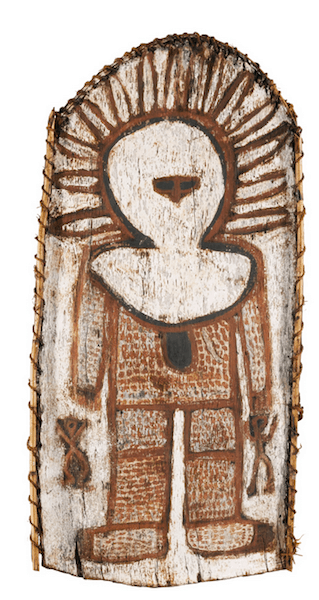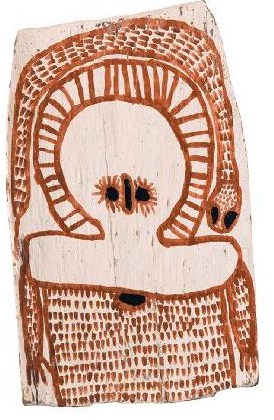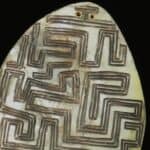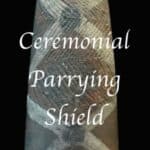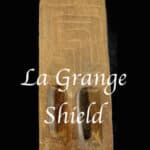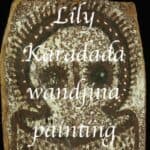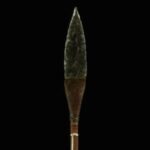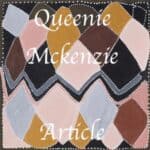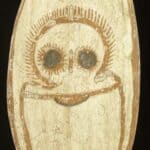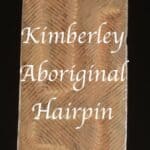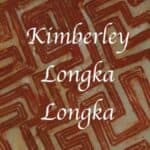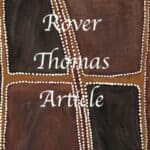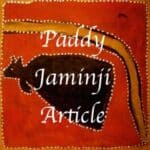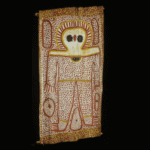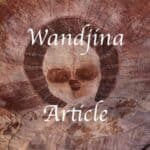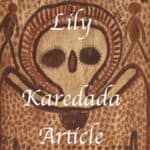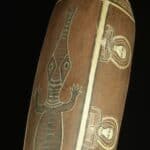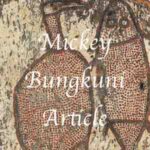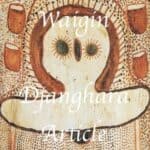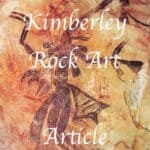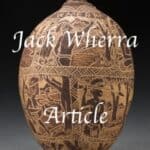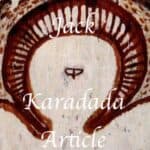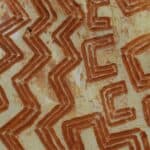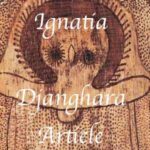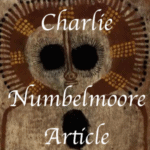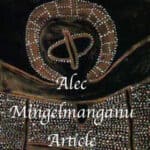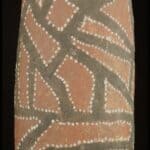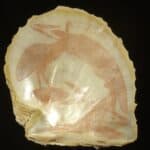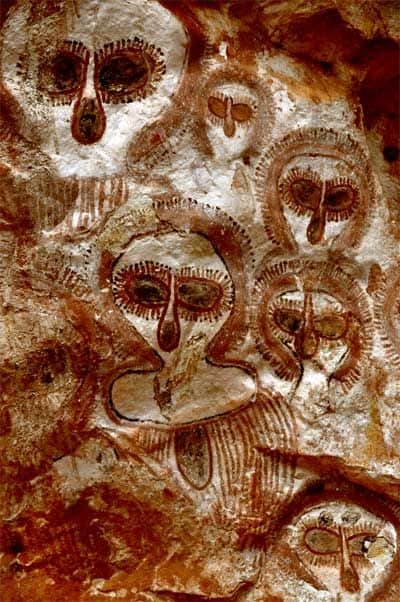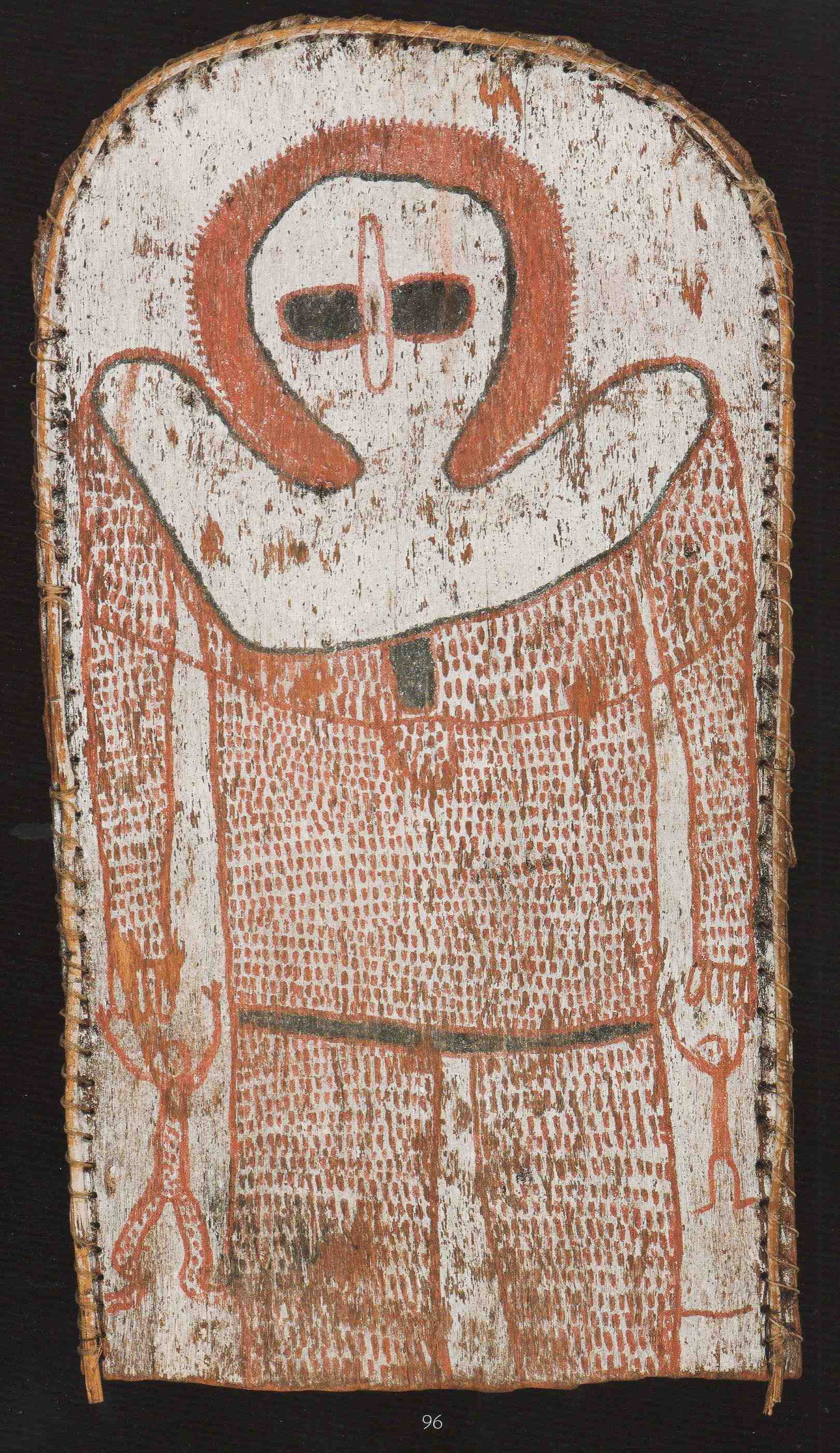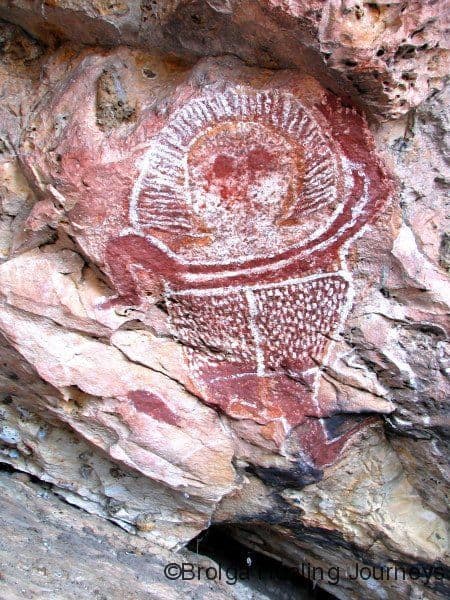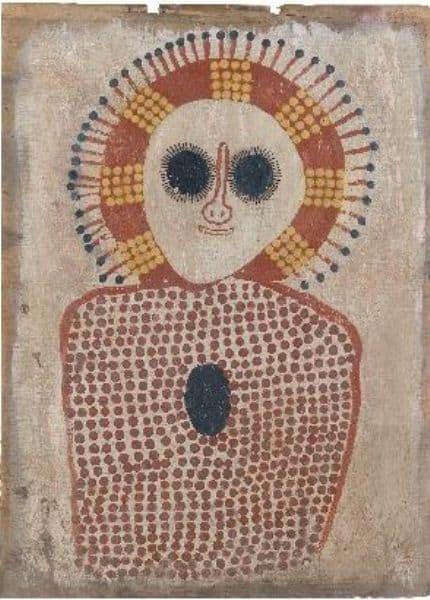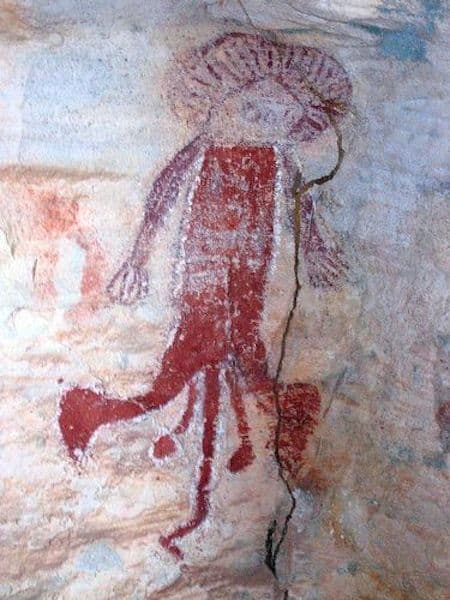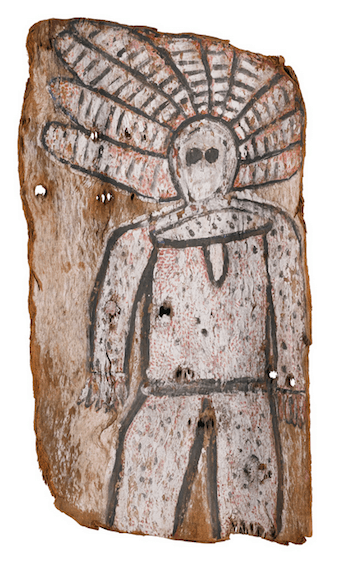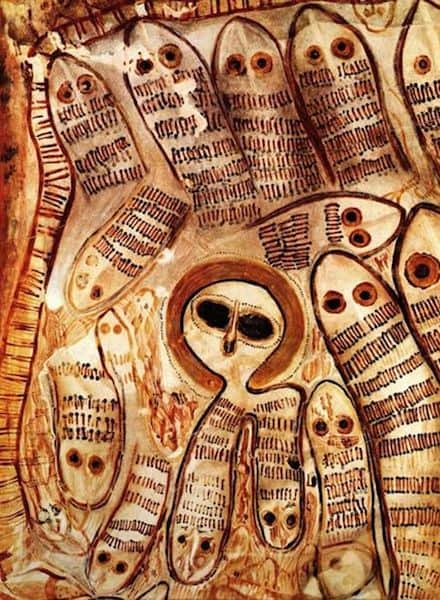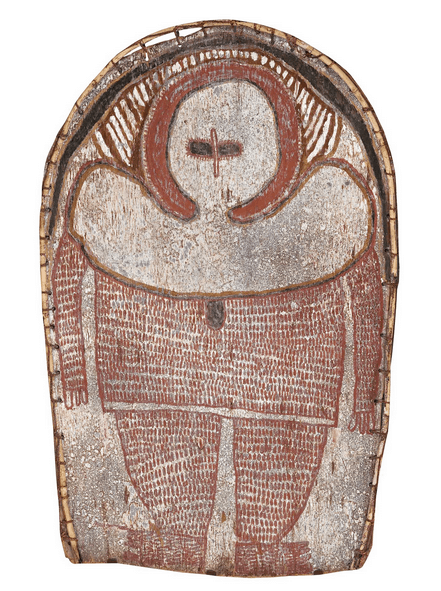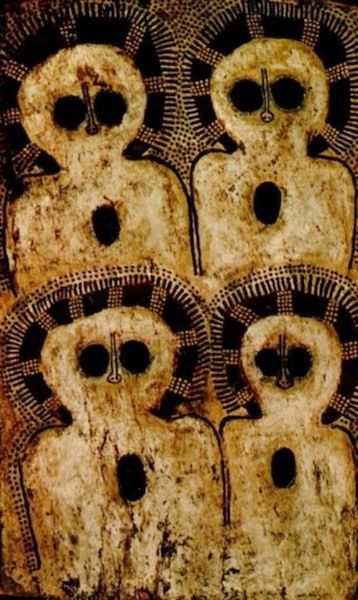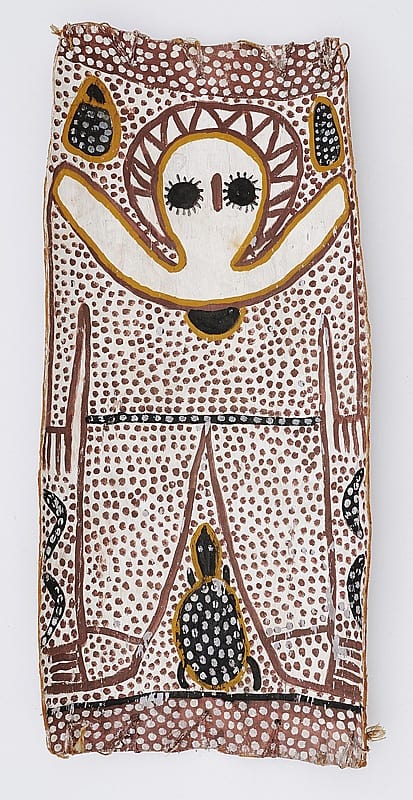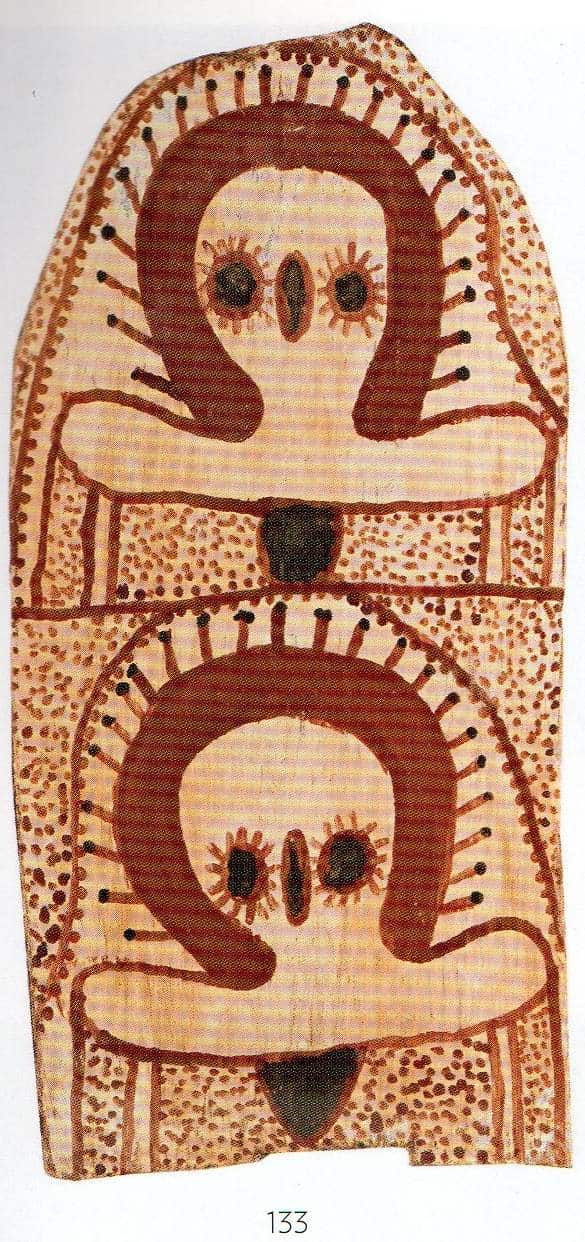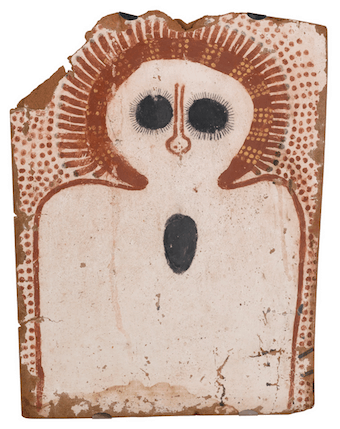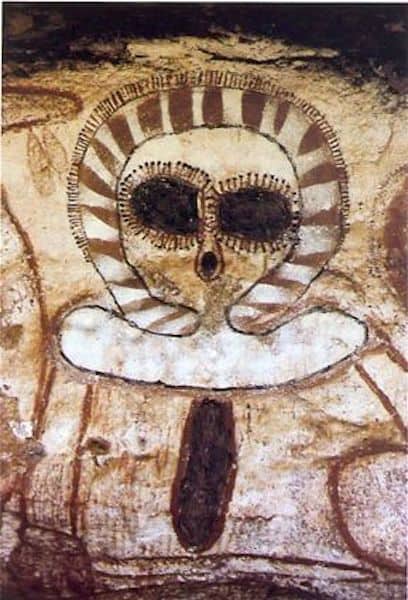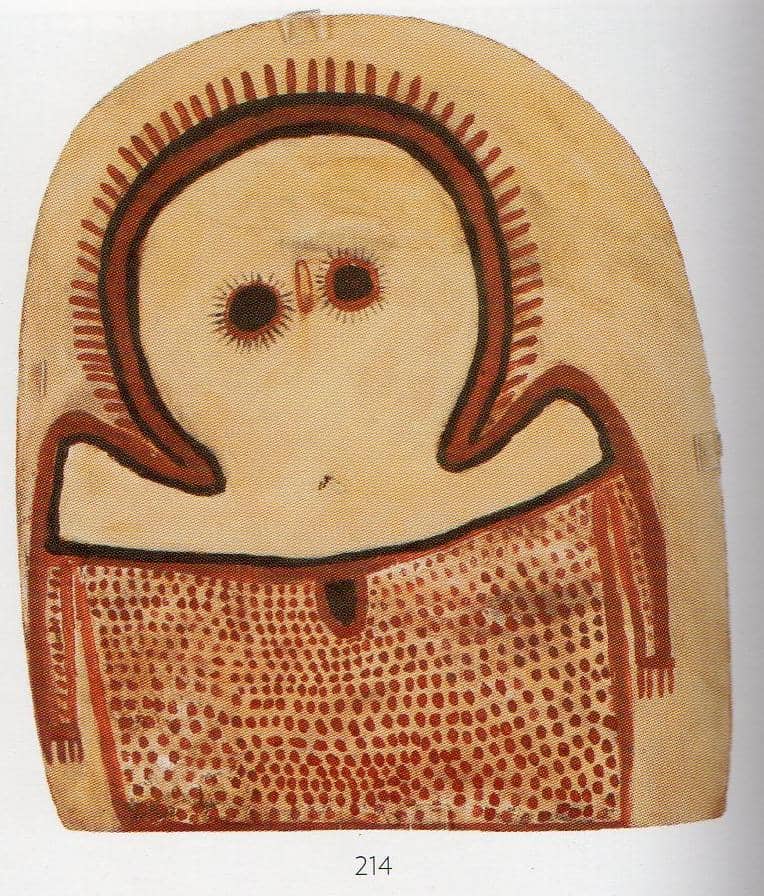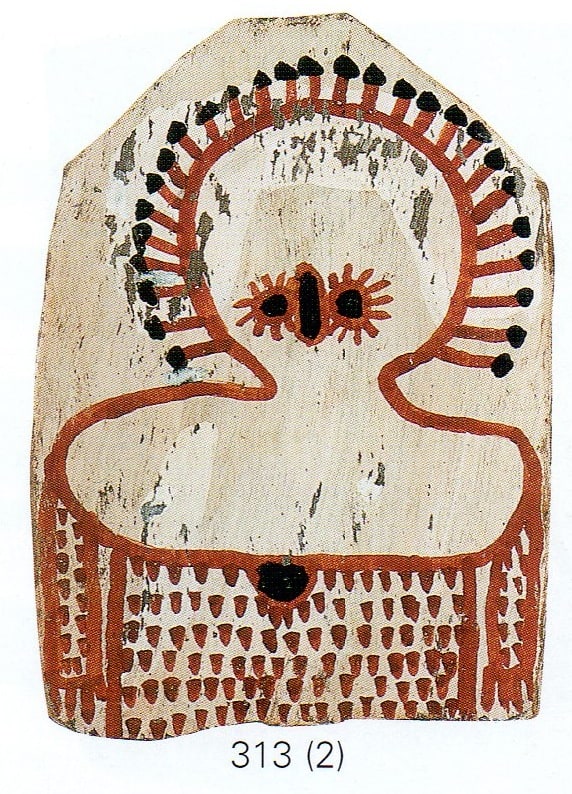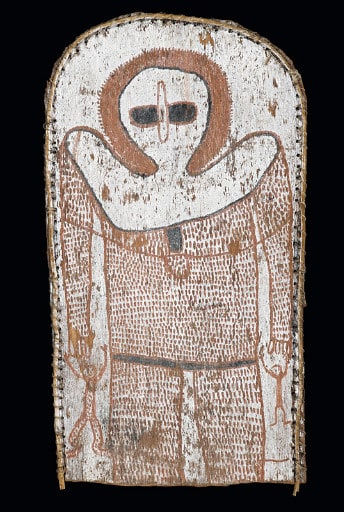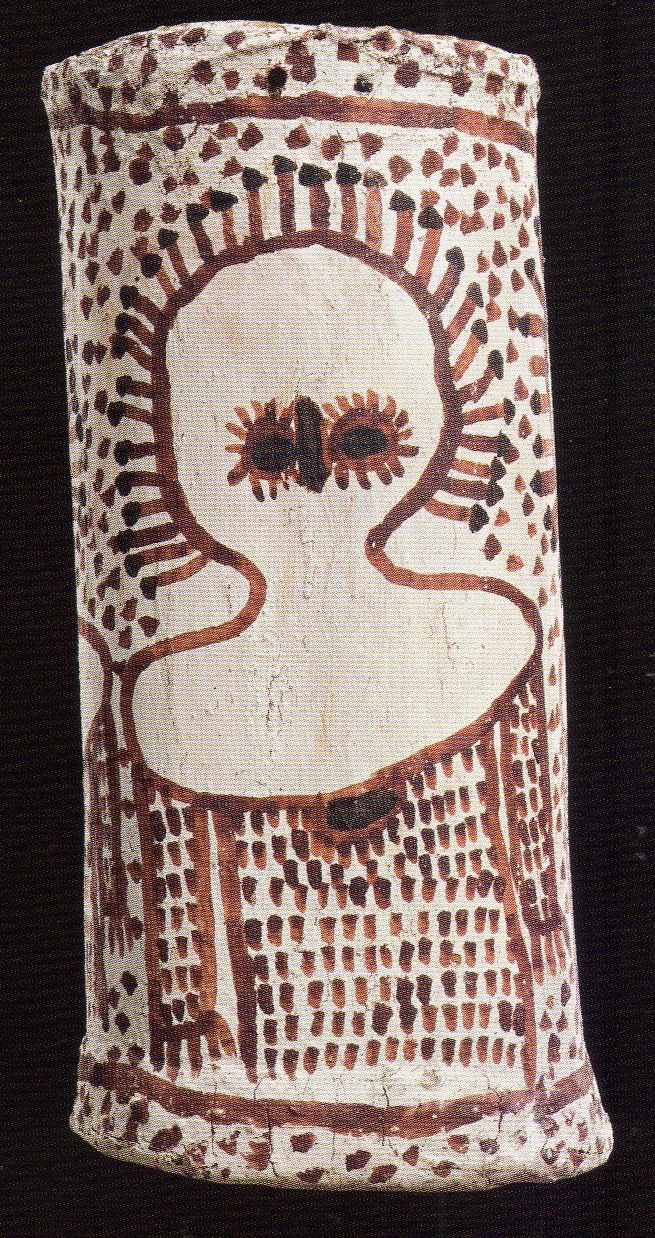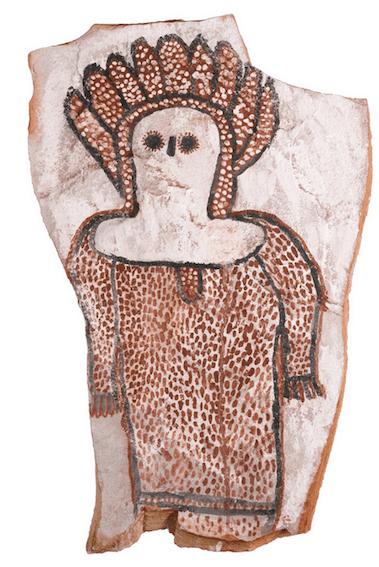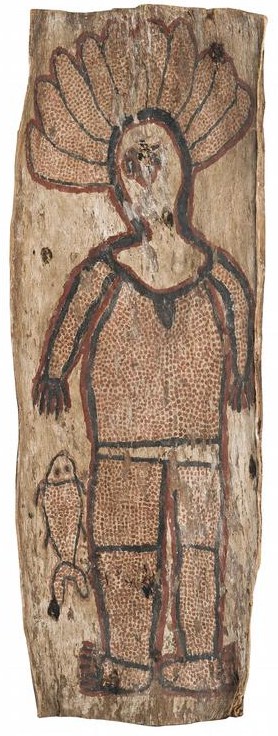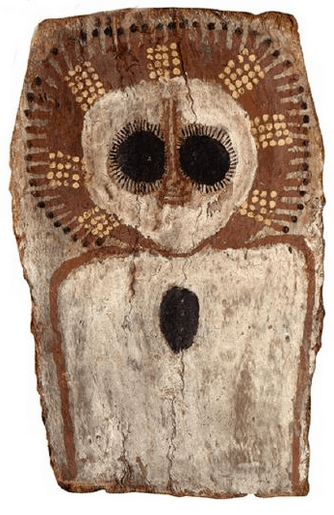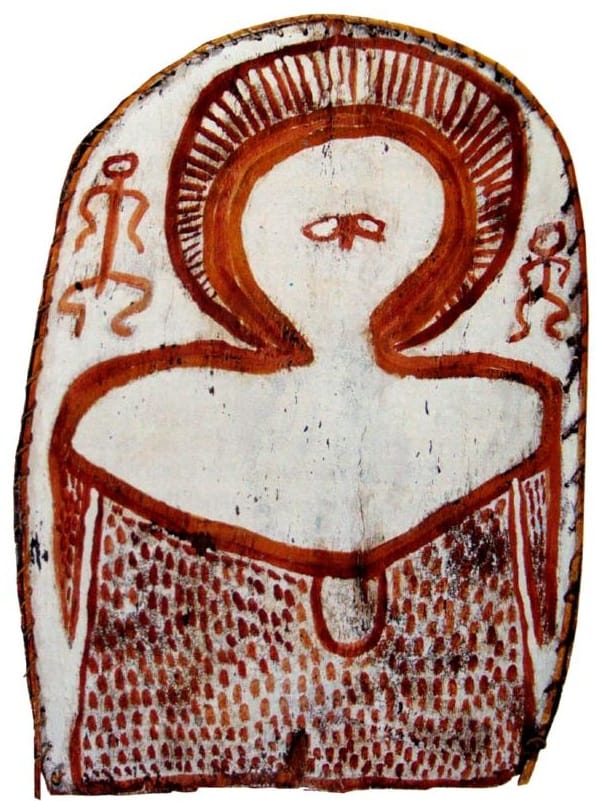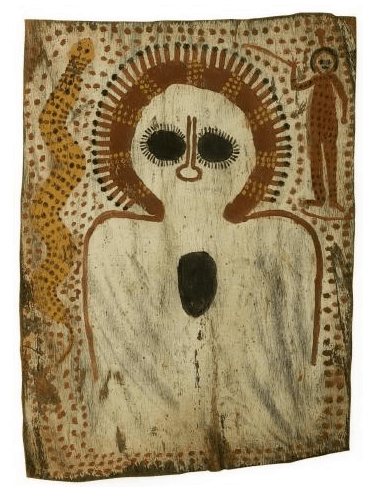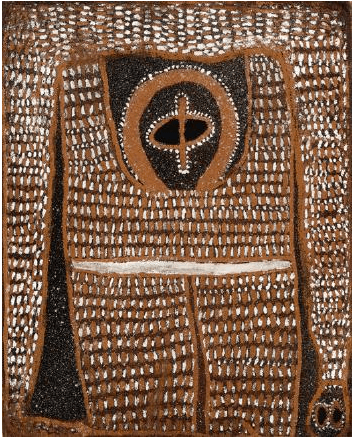Wandjina
Wandjina are found only in the Kimberley region of Western Australia. They date back between two to four thousand years.
A Wandjina figure is a shape-changing anthropomorphic being. The main creation Spirit, associated with rain and seasonal regeneration. The body of a Wandjina often shown covered with dots that represent rainfall.
The Wanjina and their associated mythology, religious practices, and rock art played a central part in the cosmology of the people of the north-central Kimberley.
This culture was practiced into the 20th century and today are still major identifying and unifying cultural elements. They are an important part of the culture for the Wunambal, Worora, and Ngarinyin peoples. Only people of the Worrorra, Ngarinyin, and Wunumbal tribes are allowed to paint Wandjina.
The identification with Wanjina is reflected in their inclusion as major motifs in contemporary art of the north-central Kimberley that has seen shifts from paintings executed on the walls of caves and overhangs, to paintings on sheets of bark and ultimately industrial materials, from chipboard to the finest artist canvases.
If you have a Wandjina painting on Bark, Canvass or composite board or even cardboard to sell please contact me. If you want to know what your Wanjina painting is worth to me please feel free to send me a Jpeg. I would love to see it.
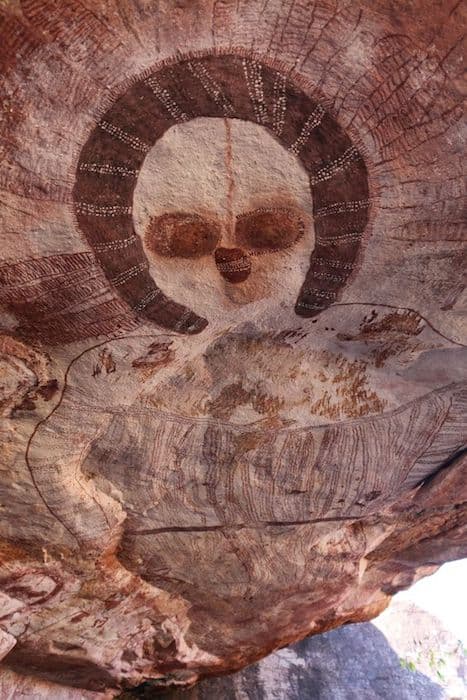
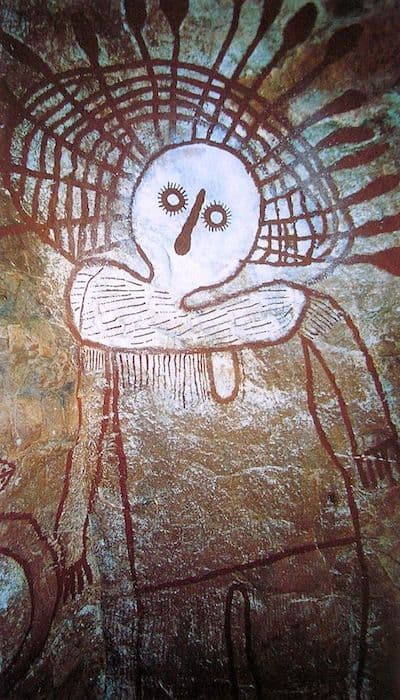
Rock shelter Wandjina painting
Within the rock shelters and caves of the northern and central areas of the Kimberley are preserved a staggering history of cultural change. Rock shelters preserve a complex sequence of Kimberley Rock Art that may extend back more than 20,000 years into the Pleistocene era.
Within the oldest art forms can be seen beautiful examples of naturalistically depicted fauna – fish, birds, reptiles, and marsupials. It is in the earlier phases of the rock art sequence that the elegant paintings of human beings known as Gwion or Bradshaw Paintings are located.
Regardless of actual size, the proportions of good Wanjina paintings project a sense of cyclopean grandeur – a massive, looming ruggedness from which the large, penetrating eyes quizzically regard the viewer.
Wandjina Artworks
Wanjina beings are usually depicted as anthropomorphic figures. They are sometimes full length but also often as busts. Busts are portrayed with just head and shoulders. The head is often surrounded by one or more halo-like headdresses or by radiating ‘plumes’.
The mouth is not traditionally depicted. Some artist like Charlie Numbulmoore, began to include mouth and teeth in the Wanjina paintings he made toward the end of his life.
There is often an oval or sub-oval mark in the central chest region. This mark depicts a traditional pearl shell adornment. Where the full body is depicted Wanjinas are often shown with a hair belt around the midrift. Wandjina are shown with major joints as well as fingers and toes. Gender is not always obvious although female Wanjinas may be depicted with breasts.
Wandjina Myth and beliefs
Wanjinas are believed to be responsible for the maintenance of the seasonal cycle – especially the Wet Season. The wet season reinvigorates the land after the drought conditions of the dry winter and early summer. Wanjinas are intimately associated with the Ungurr Rainbow Serpents.
Clan leaders stimulate and encourage the Wanjinas to fulfill their roles as agents of fertility and growth by repainting their images located in the shelters in caves. Traditionally only initiated men were allowed to paint wandjina
Wandjina are the creator beings from the Dreaming. The world was created by the rainbow serpent but the rainbow serpent realized he would need help so traveled back to the Milky way and left Wandjina to establish Lore. In aboriginal tradition, the actual Wanjina beings themselves became the painting. It is these Wanjina paintings that painted over so the power of the beings is not lost.
Aboriginal people of the Kimberley believe that if you offend Wanjina they will take their revenge. They will call up lightning to strike the offender dead. They can also flood the land and drown the people, or use a cyclone with its winds to devastate the country.
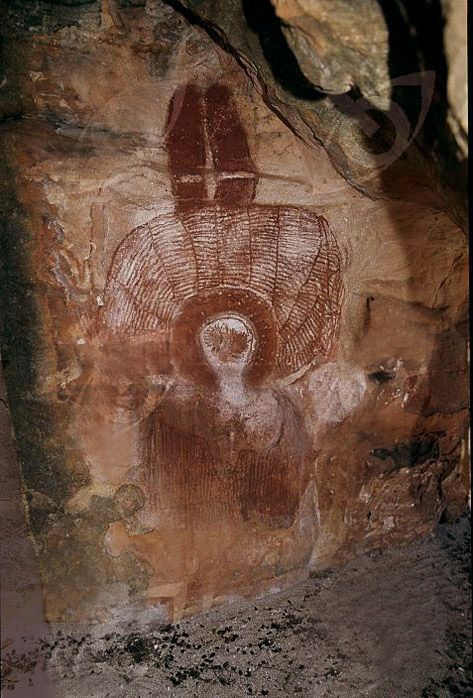
Wandjina regional differences
Different clans in the Kimberley depict Wandjina in slightly different manners. Artists like Mickey Bunguna or Wattie Karruwara come from further inland and tend to paint longer “halo’s or “headdresses” on their Wandjina.
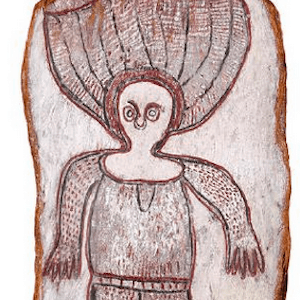
Long Halo / Headdress
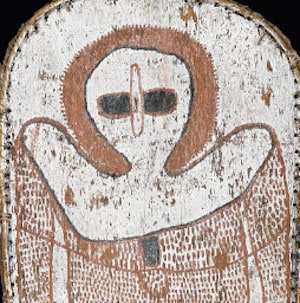
Short halo / Headdress

Wandjina as commercial art
Kimberley people have been painting wandjina paintings on bark for anthropologists since 1930. In the late 1960s/ early 1970s Wandjina paintings became commercial.
Composite board and bark were popular until the 1980s. After the 1980’s canvass became the main medium.
The most important early Wandjina artists include Charlie Numbelmoore, Alec Mingelmanganu and Jack Karedada.
Although traditionally only me could paint Wandjina several early female wandjina artists are also collectible including Ignatia Djanghara and Lily Karedada. Most of the early female artist started by helping their husbands to paint before becoming artists in their own right.
The East Kimberley have a seperate Art tradition.
Wandjina Street Art
The intriguing imagery of the Wandjina has also been reflected in some Australian street art. The indigenous owners of Wandjina are deeply upset by this development as they own the artistic style.
None the less it is still art in its own right and deserves a mention
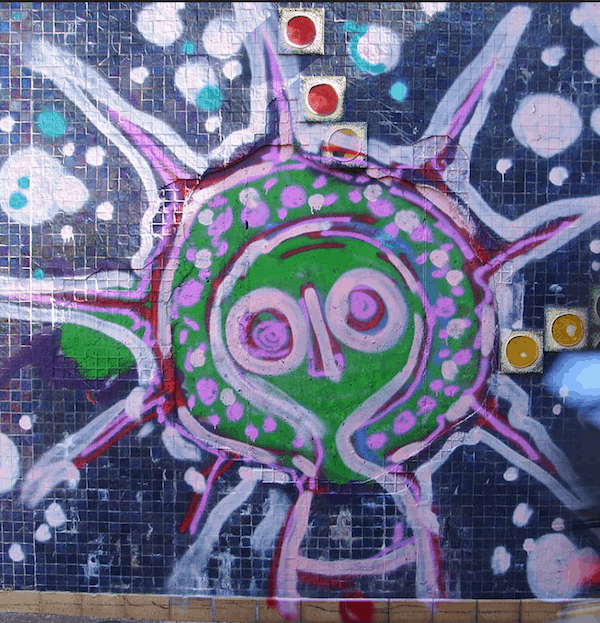
More Kimberley
Artworks and Articles
All images in this article are for educational purposes only.
This site may contain copyrighted material the use of which was not specified by the copyright owner.

